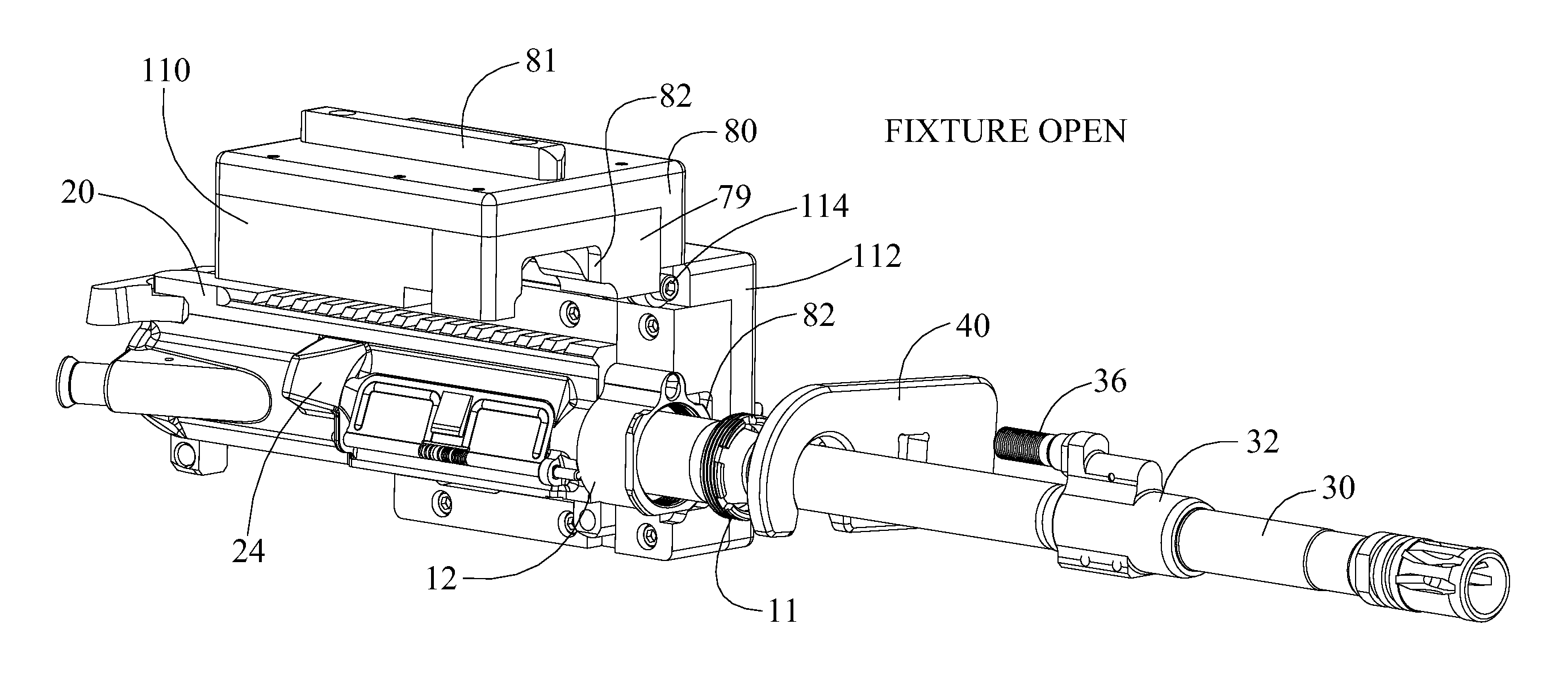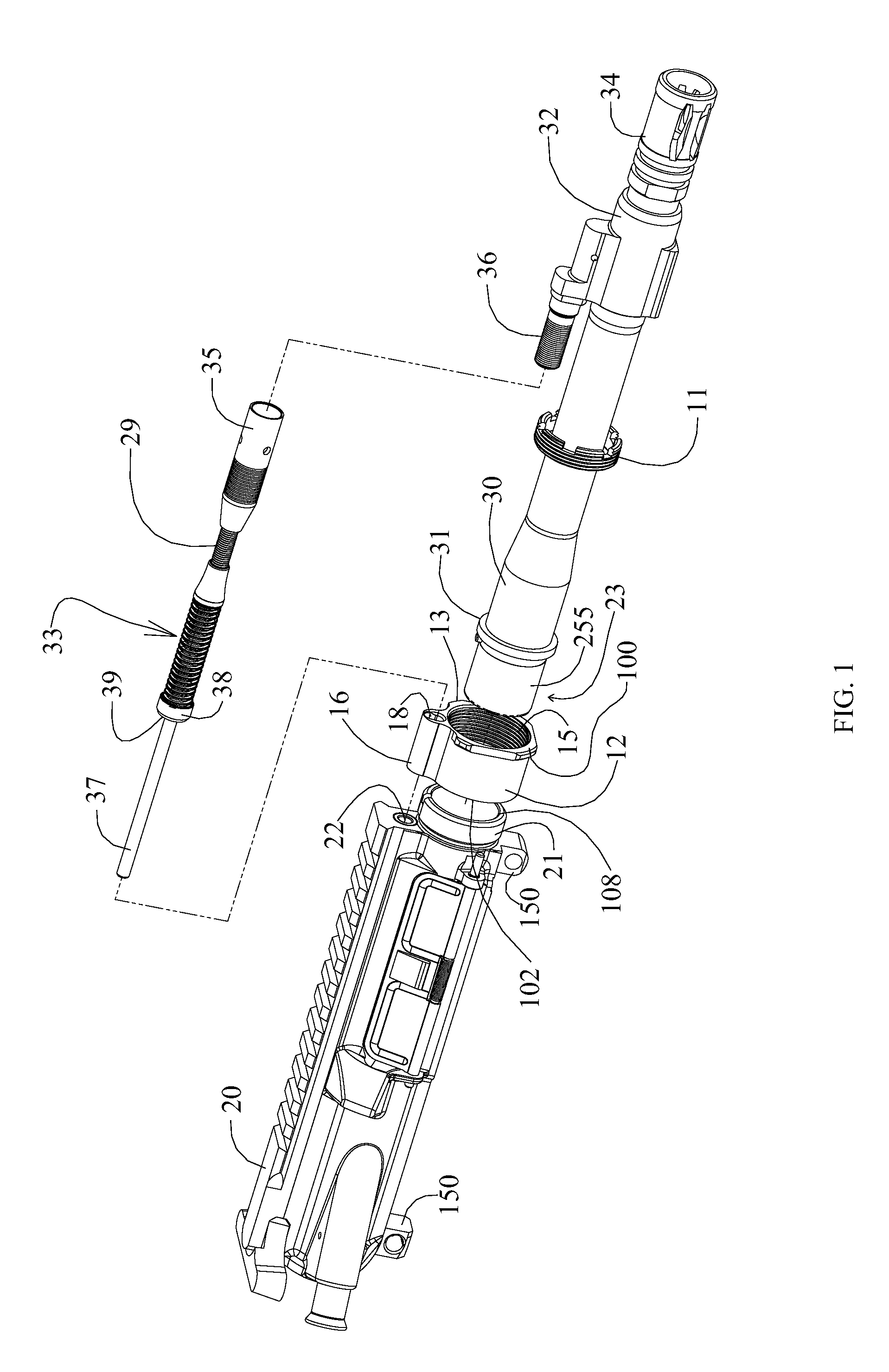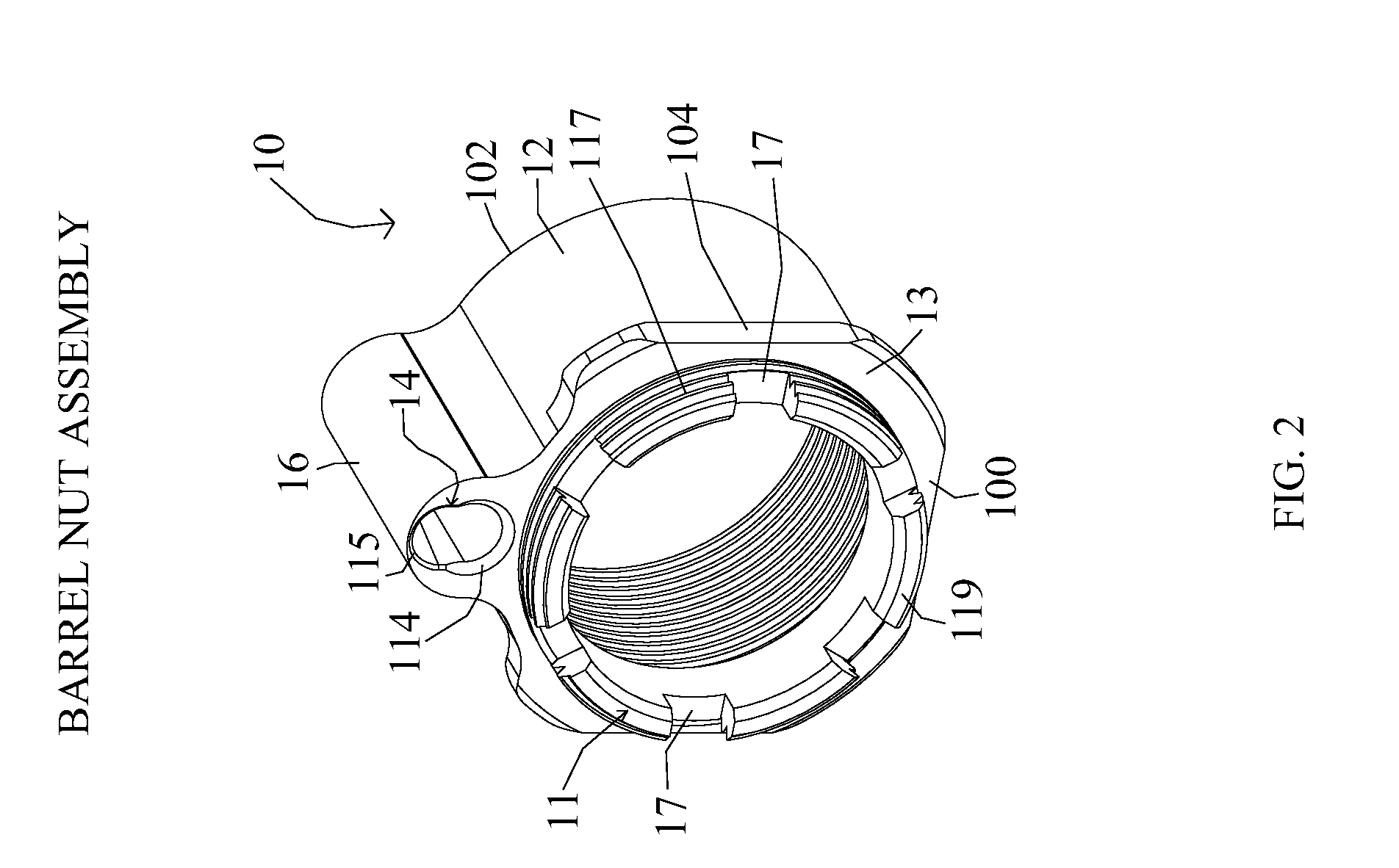Barrel nut assembly and method to attach a barrel to a firearm using such assembly
a barrel and nut technology, applied in the field of barrel nut assembly and methods to attach a barrel to a firearm using such assemblies, can solve the problems of compromising operational reliability, poor accuracy during normal operation, damage to the firearm, etc., and achieve the effect of reducing or eliminating reducing the transfer of torque to the receiver, and effectively compressing the
- Summary
- Abstract
- Description
- Claims
- Application Information
AI Technical Summary
Benefits of technology
Problems solved by technology
Method used
Image
Examples
Embodiment Construction
[0044]The present invention is directed to a barrel nut assembly for use with the AR-10, AR-15, SR25, M16 firearms and other derivatives to include those which use a gas piston in place of a conventional gas tube. Unless otherwise specified, the various components which make up the trigger mechanism, upper receiver assembly, lower receiver assembly, buttstock assembly, bolt assembly and barrel assembly are those found on the prior art M16 and M4 rifles and their various embodiments.
[0045]As used herein, the word “front” or “forward” corresponds to the end nearest the barrel (i.e., to the right as shown in FIG. 1); and “rear” or “rearward” or “back” corresponds to the direction opposite the end of the barrel, where the receiver is located (i.e., to the left as shown in FIG. 1).
[0046]The present invention is directed to a barrel nut assembly for securing a barrel to the front end of a receiver. In FIG. 1 there is illustrated an exploded perspective view of a firearm upper receiver gro...
PUM
| Property | Measurement | Unit |
|---|---|---|
| torque | aaaaa | aaaaa |
| angle | aaaaa | aaaaa |
| angle | aaaaa | aaaaa |
Abstract
Description
Claims
Application Information
 Login to View More
Login to View More - R&D
- Intellectual Property
- Life Sciences
- Materials
- Tech Scout
- Unparalleled Data Quality
- Higher Quality Content
- 60% Fewer Hallucinations
Browse by: Latest US Patents, China's latest patents, Technical Efficacy Thesaurus, Application Domain, Technology Topic, Popular Technical Reports.
© 2025 PatSnap. All rights reserved.Legal|Privacy policy|Modern Slavery Act Transparency Statement|Sitemap|About US| Contact US: help@patsnap.com



